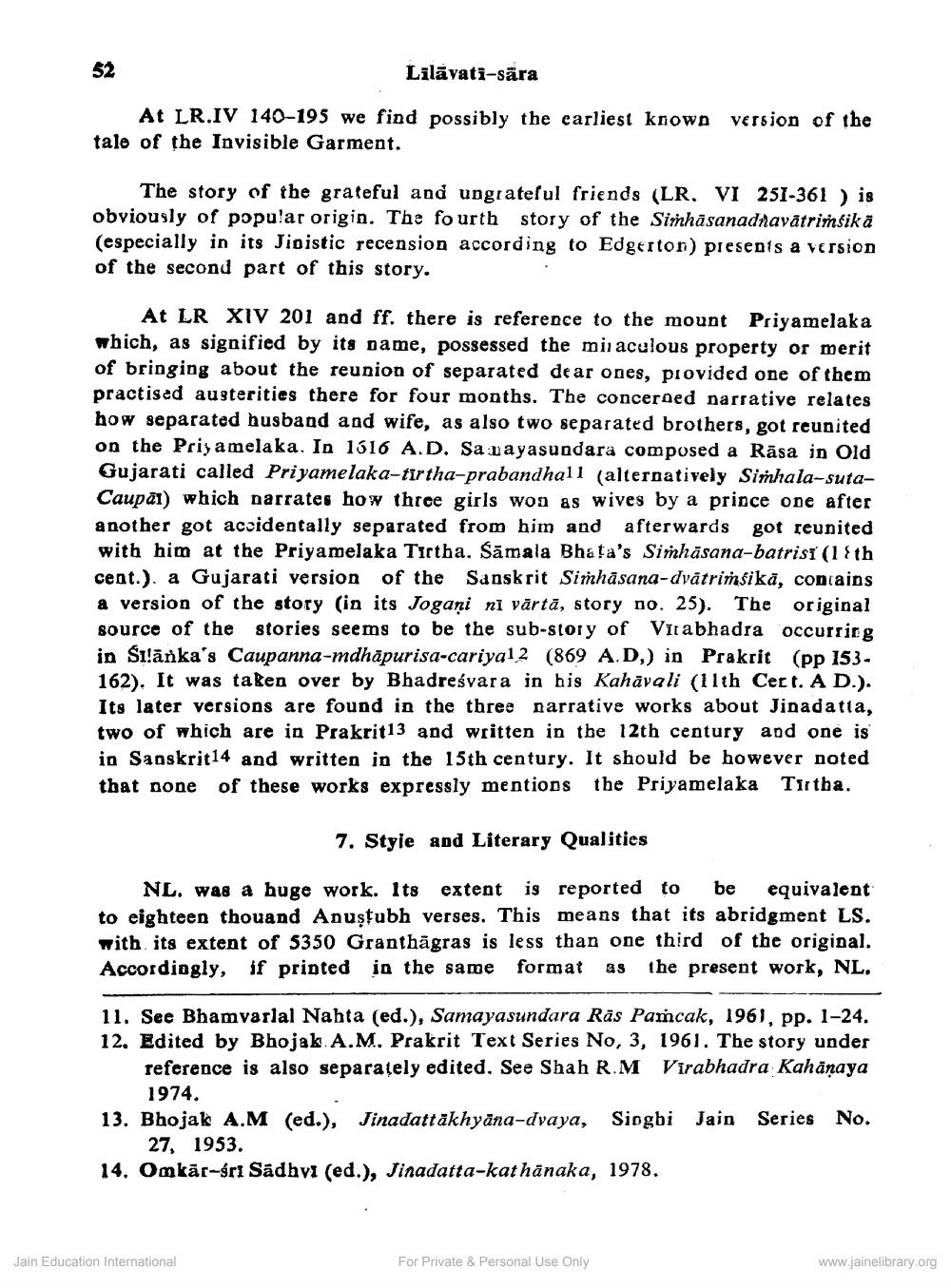________________
Lilāvati-sära
At LR.IV 140-195 we find possibly the earliest known version of the talo of the Invisible Garment.
The story of the grateful and ungrateful friends (LR. VI 251-361 ) is obviously of popular origin. The fourth story of the Simhasanadnavatrimsikā (especially in its Jioistic recension according to Edgerton) presents a version of the second part of this story.
At LR XIV 201 and ff. there is reference to the mount Priyamelaka which, as signified by its name, possessed the miraculous property or merit of bringing about the reunion of separated dear ones, provided one of them practised austerities there for four months. The concerned narrative relates how separated husband and wife, as also two separated brothers, got reunited on the Prizamelaka. In 1616 A.D. Sa vayasundara composed a Rāsa in Old Gujarati called Priyamelaka-tirtha-prabandhall (alternatively Sinhala-sutaCaupai) which narrates how three girls won as wives by a prince one after another got accidentally separated from him and afterwards got reunited with him at the Priyamelaka Tirtha. Sāmala Bhata's Simhāsana-batrist (18th cent.). a Gujarati version of the Sanskrit Simhasana-dvātrimsikā, contains a version of the story (in its Jogani ni vārtā, story no. 25). The original source of the stories seems to be the sub-story of Virabhadra occurring in Sılānka's Caupanna-mdhāpurisa-cariyal 2 (869 A,D,) in Prakrit (pp 153162). It was taken over by Bhadreśvara in his Kahāvali (ilth Cect. A D.). Its later versions are found in the three narrative works about Jinadatta, two of which are in Prakrit13 and written in the 12th century and one is in Sanskrit14 and written in the 15th century. It should be however noted that none of these works expressly mentions the Priyamelaka Tirtha.
7. Styie and Literary Qualities
NL. was a huge work. Its extent is reported to be equivalent to eighteen thouand Anuştubh verses. This means that its abridgment LS. with its extent of 5350 Granthägras is less than one third of the original. Accordingly, if printed in the same format as the present work, NL,
11. See Bhamvarlal Nahta (ed.), Samayasundara Rās Pamcak, 1961, pp. 1-24. 12. Edited by Bhojak A.M. Prakrit Text Series No, 3, 1961. The story under
reference is also separately edited. See Shah RM Virabhadra Kahānaya
1974. 13. Bhojak A.M (ed.), Jinadattākhyāna-dvaya, Siogbi Jain Series No.
27, 1953. 14. Onkār-sri Sadhvi (ed.), Jinadatta-kathānaka, 1978.
Jain Education International
For Private & Personal Use Only
www.jainelibrary.org




